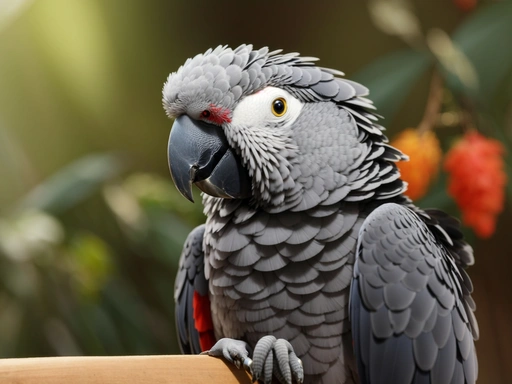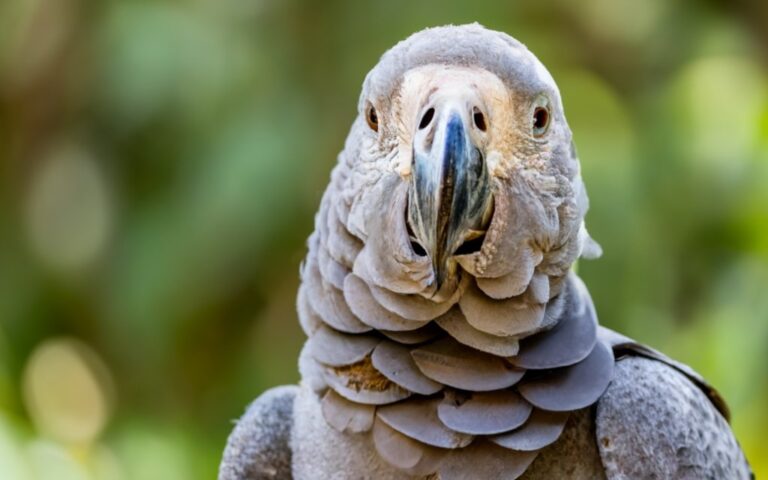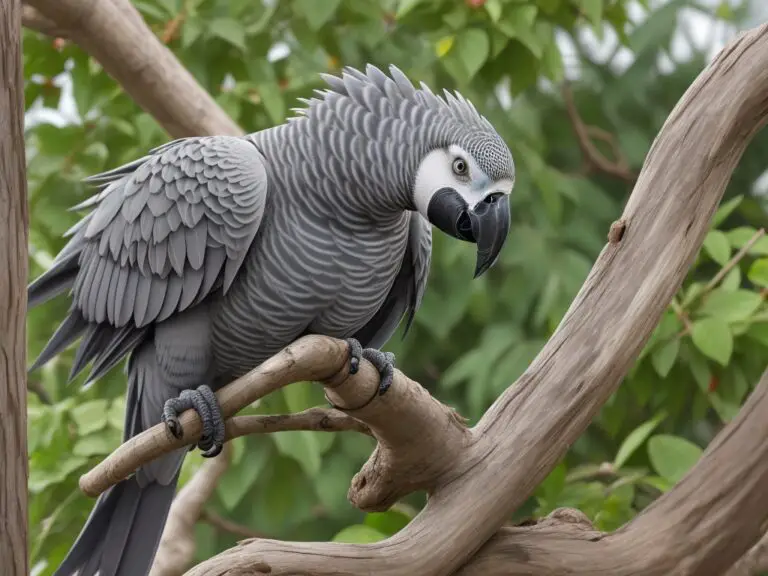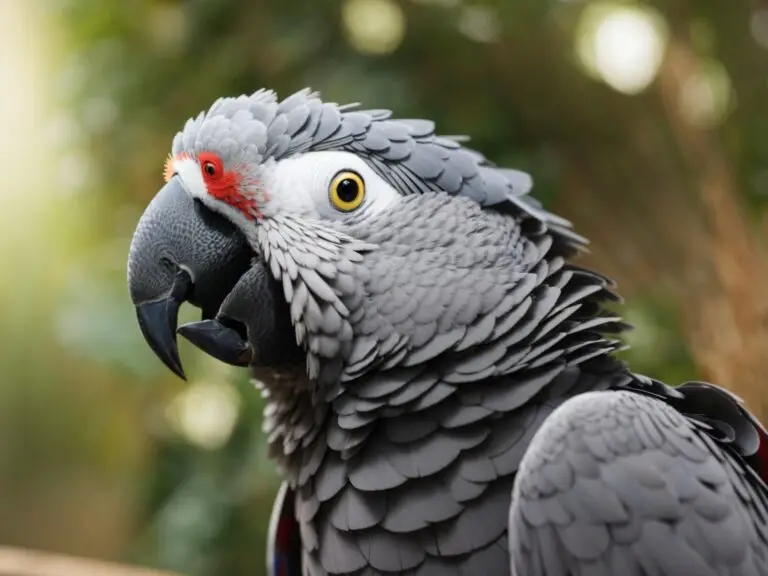Can African Grey Parrots See In The Dark?
Key Takeaways:
- African grey parrots cannot see in complete darkness due to their lack of a specific adaptation called a tapetum lucidum.
- However, they possess better night vision than humans and can navigate well in dimly lit environments.
- African grey parrots rely on their keen hearing and memory to navigate in low-light conditions.
- While they may not have the same abilities as night-vision animals, African grey parrots are nonetheless well-adapted to their natural environment.
Have you ever wondered if African grey parrots have the same night vision as owls? These intelligent and captivating creatures have fascinated bird enthusiasts for years, and their unique abilities never cease to amaze.
In this article, we dive into the world of African grey parrots and explore their vision, specifically addressing the question of whether or not they can see in the dark.
Join me as we uncover the fascinating facts, adaptations, and studies that shed light on this intriguing topic. Get ready to be astonished by the remarkable world of African grey parrots!
| Question | Answer |
|---|---|
| Can African grey parrots see in the dark? | Yes, African grey parrots have excellent night vision. |
Understanding African Grey Parrots
African Grey Parrots are highly intelligent birds known for their exceptional mimicry skills and ability to learn complex tasks.
African Grey Parrots are native to the forests of West and Central Africa and have unique physical characteristics that help them adapt to their natural habitat.
Physical Characteristics of African Grey Parrots
African Grey Parrots have a distinctive gray plumage with a red tail.
They have a large beak, strong feet, and short legs.
These parrots are medium-sized, measuring around 13 inches in length.
They also have a unique feature called the “nape feathers” on the back of their neck that can be raised when they feel threatened or excited.
Their eyes are dark brown or black, and their wings are rounded.
African Grey Parrots are known for their intelligence and ability to mimic human speech.

Natural Habitat and Adaptations of African Grey Parrots
African Grey Parrots are native to the rainforests of West and Central Africa. They inhabit dense forests, where they can find food and stay safe from predators.
These parrots have adapted to their habitat by developing strong beaks for cracking open nuts and seeds, as well as excellent vocal abilities for communication and social interaction.
They also have keen eyesight, allowing them to navigate through the dense foliage and spot potential dangers. In the wild, African Grey Parrots are known for their intelligence and ability to mimic human speech.
They are highly adaptable birds and can thrive in captivity with proper care and enrichment.
The Vision of African Grey Parrots
African grey parrots have unique visual capabilities.
Their vision allows them to perceive a wide range of colors and depths with great accuracy.
An Overview of Avian Vision
Birds have exceptional vision that helps them navigate the world.
They can see a wider range of colors than humans, including ultraviolet light.
Their eyes are designed for acute distance vision, allowing them to spot prey or predators from far away.
Birds also have a higher number of photoreceptor cells in their eyes, giving them sharper vision.
Additionally, many bird species have the ability to see polarized light, which helps them orient themselves during migration.
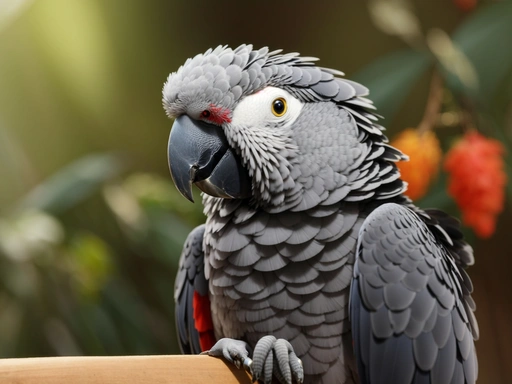
Unique Features of African Grey Parrot Vision
African Grey Parrots have unique features in their vision. They have excellent color vision, allowing them to see a wide spectrum of colors.
They also have strong depth perception and the ability to perceive fine details.
Additionally, they have a high number of light-sensing cells in their retinas, enhancing their visual acuity. Overall, their vision is well adapted for their natural environment.
Can African Grey Parrots See in the Dark?
Yes, African Grey Parrots have excellent night vision.
They have more light-sensitive cells in their eyes compared to humans, allowing them to see in low light conditions.
Their ability to navigate and find food in the dark is one of their remarkable adaptations.
Factors Affecting Parrot Vision
Various factors can affect a parrot’s vision, including the role of light and other external influences.
The Role of Light in Parrot Vision
Light plays a vital role in parrot vision.
It helps them see and distinguish objects, colors, and details.
Parrots have excellent color vision, and light intensity affects their visual perception.
Adequate lighting is important for their overall well-being and to prevent vision problems.
Other Factors Influencing Parrot Vision
Other factors influencing parrot vision include diet, overall health, and age. A nutritious diet with essential vitamins and minerals is crucial for maintaining good vision.
Regular veterinary check-ups ensure any vision-related issues are detected and treated early.
Aging can also affect vision, so it’s important to provide appropriate care and attention as your parrot gets older.
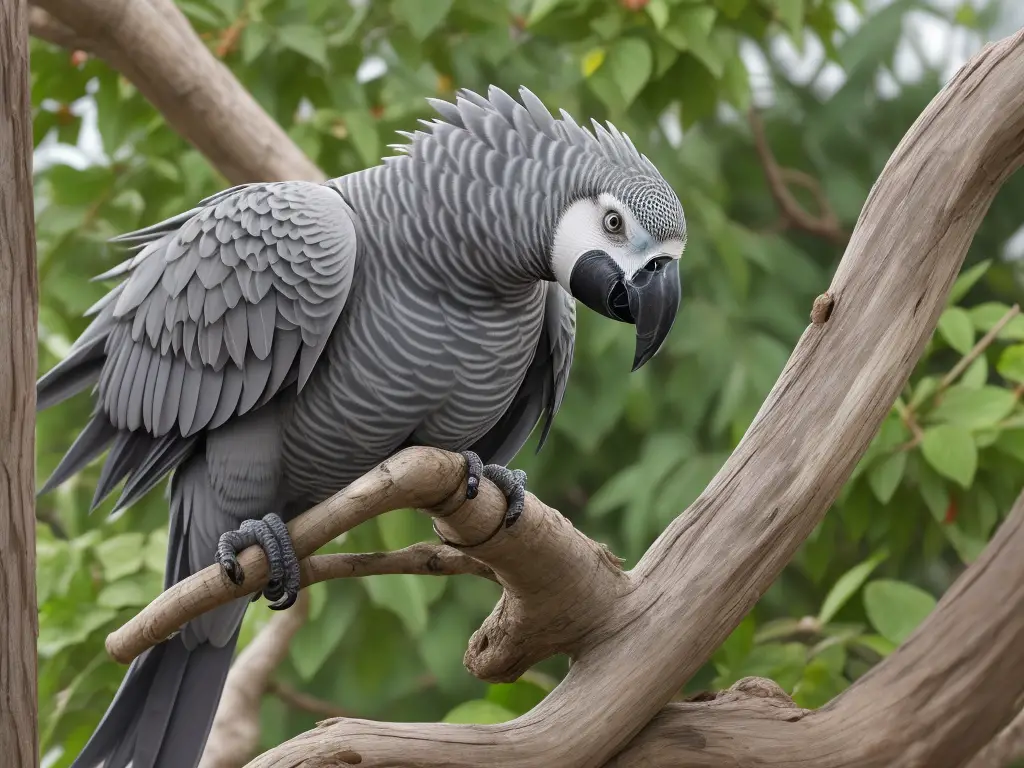
Night Vision in Parrots
Parrots have excellent night vision that allows them to navigate and forage even in low light conditions.
Night Vision Adaptations in Birds
Birds have various adaptations that allow them to see in low light conditions. These adaptations include larger eyes, a higher number of rod cells (responsible for low light vision), and a high concentration of photopigments.
They also have a reflective layer behind the retina called the tapetum lucidum, which enhances their night vision.
These adaptations help birds like African grey parrots navigate and hunt in dimly lit environments.
Studies on African Grey Parrot Night Vision
Studies on African Grey Parrot night vision have shown that these birds have excellent visual capabilities in low-light conditions. Researchers have found that African Grey Parrots have a higher number of rod cells in their eyes compared to other parrot species, which helps them see better in dim lighting.
Additionally, these parrots have a higher number of mitochondria in their retinal cells, further enhancing their night vision.
The ability of African Grey Parrots to see in the dark is believed to be an adaptation to their natural habitat, where they may need to forage and navigate during dusk or dawn.
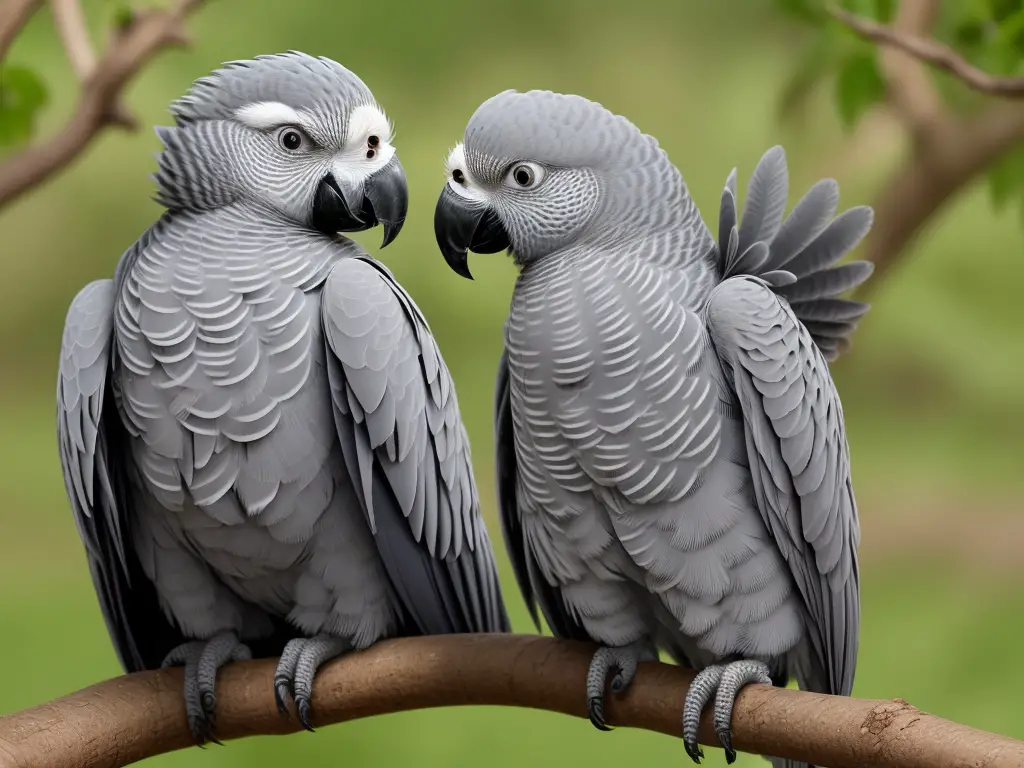
How to Enhance Your African Grey Parrot’s Night Vision
Enhance your African Grey Parrot’s night vision by providing proper lighting, creating a safe and stimulating environment, and ensuring regular eye care and vet check-ups.
Providing Proper Lighting for Your Parrot
Proper lighting for your parrot is essential to ensure their well-being.
Here are some tips:
- Provide natural light: If possible, place your parrot’s cage near a window to allow them to benefit from natural sunlight. However, be careful to avoid direct exposure to intense sunlight, as it can cause overheating or sunburn.
- Use full-spectrum lighting: Install full-spectrum light bulbs specifically designed for birds in your parrot’s cage. These bulbs mimic natural sunlight and provide the necessary UVB rays for vitamin D synthesis. Follow the manufacturer’s recommendations for bulb placement and duration of use.
- Maintain a consistent lighting schedule: Birds thrive on a regular routine. Keep the lighting in their environment consistent by using a timer to simulate natural daylight cycles. Aim for 10-12 hours of light and 8-12 hours of darkness each day.
- Avoid harsh or flickering lights: Strong, bright lights or lights that flicker can be stressful for your parrot. Opt for softer, diffused lighting to create a calm and comfortable environment.
- Monitor lighting levels: Pay attention to the brightness of the lighting in your parrot’s living space. If it’s too dim, it may affect their activity level and overall well-being. Conversely, if it’s too bright, it can disrupt their sleep patterns.
Remember, providing proper lighting for your parrot is just one aspect of their overall care.
Along with lighting, ensure they have a balanced diet, plenty of mental and physical stimulation, and regular check-ups with a avian veterinarian.

Creating a Safe and Stimulating Environment
Creating a safe and stimulating environment for your African Grey Parrot is crucial for their overall well-being. Here are a few tips to help you achieve this:
- Provide a spacious cage: Ensure that your parrot has enough room to move around and stretch its wings comfortably. A cage with suitable perches and plenty of toys will keep them mentally and physically stimulated.
- Offer a variety of toys: African Grey Parrots are intelligent and curious birds. Provide them with a range of toys that offer mental and physical challenges, such as puzzle toys, foraging toys, and chew toys. Rotate these toys regularly to keep them engaged and prevent boredom.
- Offer a balanced diet: A nutritious and well-balanced diet is vital for your parrot’s health. Include a mix of fresh fruits, vegetables, high-quality pellets, and occasional protein sources like cooked eggs or lean meat. Consult with a avian veterinarian to ensure you are meeting your parrot’s specific dietary needs.
- Create a quiet and calm environment: Avoid exposing your parrot to loud noises, such as from televisions or stereos. Provide them with a peaceful environment where they feel safe and secure. This will help reduce stress and promote their overall well-being.
- Socialize and interact with your parrot: African Grey Parrots are highly social birds and require regular interaction and stimulation from their human companions. Spend quality time with your parrot, engaging in activities like training, talking, and playing games. This will strengthen the bond between you and your parrot.
Remember, each parrot is unique, so observe your African Grey Parrot’s behavior and preferences to ensure you are providing them with the best possible environment. Regular vet check-ups and maintaining a clean living space are also important for their well-being.
Frequently Asked Questions
How Well Can African Grey Parrots See in Low Light Conditions?
African Grey parrots have excellent vision in low light conditions, thanks to their unique adaptations.
They have a high number of light-sensitive cells called rods in their retinas, allowing them to perceive light and movement even in dim lighting.
However, their vision may not be as sharp as during the day.
Can African Grey Parrots See Colors in the Dark?
African Grey Parrots cannot see colors in the dark. They rely on light to perceive colors, just like humans.
In low light conditions, their vision is limited, and they may struggle to distinguish between different colors.
It’s important to provide proper lighting for their visual needs.
Are African Grey Parrots More Active During the Night?
African Grey Parrots are primarily diurnal, meaning they are active during the day. While they may be more active during dawn and dusk, they are not typically nocturnal animals.
They require adequate rest and sleep during the night, just like humans.
What Other Senses Do African Grey Parrots Rely On?
African Grey parrots rely on their sense of hearing and touch in addition to their vision.
They have excellent hearing, which allows them to mimic sounds and learn human speech.
They also have sensitive beaks that help them explore and manipulate objects.
These senses play a vital role in their communication and understanding of their environment.
Final Verdict
African Grey Parrots possess unique visual adaptations that allow them to see well in low light conditions.
While they may not have true night vision like some nocturnal animals, they have excellent vision and can perceive light levels that humans cannot.
Their ability to dilate their pupils and adjust to different lighting conditions enables them to navigate and forage during dusk and dawn.
Providing appropriate lighting, creating a stimulating environment, and maintaining regular eye care can help enhance your African Grey Parrot’s night vision and overall well-being.




